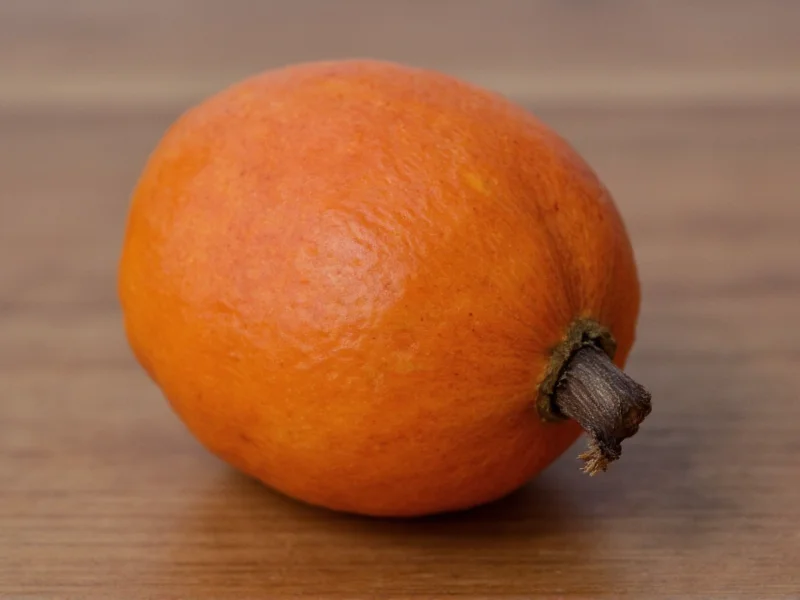Understanding Spice Fruits: Nature's Culinary Treasures
When exploring the world of \"spice fruit,\" it's essential to recognize that certain fruits have evolved to become indispensable in global cuisine. Unlike common fruits eaten fresh, these botanical marvels undergo specific processing to transform into the spices we know and love. The most prominent example remains allspice, but several other fruits serve as the foundation for beloved spices.
Allspice: The Quintessential Spice Fruit
Allspice, scientifically known as Pimenta dioica, originates from the evergreen trees native to the Greater Antilles, southern Mexico, and Central America. Despite its name suggesting a blend, allspice comes from a single fruit source. The berries measure approximately 5-7mm in diameter and turn from green to reddish-brown as they mature.
Harvested when still unripe, these berries undergo sun-drying for 6-10 days, during which they shrink and develop their characteristic flavor. The name \"allspice\" emerged in 17th century England when British explorers noted its combined flavor profile resembling cinnamon, nutmeg, and cloves. In Jamaica, where much of the world's supply originates, it's called \"pimento\"—a name derived from the Spanish word for pepper.
Other Fruit-Based Spices Worth Knowing
While allspice represents the most direct answer to \"what is spice fruit,\" several other fruits serve as spice sources:
| Spice Fruit | Botanical Source | Processing Method | Primary Flavor Notes |
|---|---|---|---|
| Allspice | Pimenta dioica berries | Sun-dried unripe berries | Cinnamon, nutmeg, cloves |
| Nutmeg | Myristica fragrans seed | Dried seed kernel | Warm, nutty, slightly sweet |
| Mace | Myristica fragrans aril | Dried outer covering of nutmeg | More delicate, citrusy than nutmeg |
| Cloves | Syzygium aromaticum flower buds | Sun-dried unopened flower buds | Intensely aromatic, warm, pungent |
| Star Anise | Illicium verum fruit | Dried star-shaped fruit pods | Sweet licorice-like, warm |
Culinary Applications of Spice Fruits
Understanding how to use spice fruit in cooking separates novice cooks from seasoned culinary enthusiasts. Allspice demonstrates remarkable versatility across global cuisines:
- Caribbean cuisine: Essential in jerk seasoning, where it combines with Scotch bonnet peppers and thyme
- Middle Eastern dishes: Features prominently in baharat spice blends and meat rubs
- Baking applications: Adds depth to pumpkin pie, gingerbread, and fruit compotes
- Pickling and preserving: Contributes complexity to pickled vegetables and chutneys
When working with whole allspice berries versus ground allspice, note that whole berries retain their flavor significantly longer—up to 3-4 years when stored properly in airtight containers away from light. Ground allspice maintains optimal flavor for 6-12 months. For maximum flavor extraction in liquid-based dishes like stews or braises, add whole berries early in the cooking process, then remove before serving.
Nutritional Profile and Traditional Uses
Research into the health benefits of allspice reveals promising compounds. The berries contain eugenol (also found in cloves), which demonstrates anti-inflammatory properties. They also provide dietary fiber, manganese, and vitamin K. Traditional medicine systems have employed allspice for digestive support and pain relief, though modern scientific validation remains limited.
When exploring spice fruit health benefits, it's crucial to distinguish between culinary consumption and medicinal applications. While moderate use in cooking poses no health risks for most people, concentrated extracts or supplements require medical consultation, particularly for those with bleeding disorders or scheduled surgeries due to potential blood-thinning effects.
Common Misconceptions About Spice Fruits
Several misunderstandings persist regarding spice fruit terminology and usage:
- Misconception: Allspice is a blend of multiple spices
Reality: It's a single-ingredient spice derived from one fruit source - Misconception: \"Spice fruit\" refers to fruits with spicy (hot) flavors
Reality: It denotes fruits used as spices, not necessarily hot-tasting fruits - Misconception: Allspice and mixed spice are interchangeable
Reality: Mixed spice typically contains cinnamon, coriander, and other spices, while allspice is singular
Practical Tips for Working With Spice Fruits
To maximize the culinary potential of spice fruits like allspice, consider these professional techniques:
- Toasting whole berries: Briefly toast in a dry skillet over medium heat for 1-2 minutes until fragrant, then grind for intensified flavor in rubs and marinades
- Infusion methods: Create allspice-infused oils or vinegars by combining 5-6 whole berries per cup of liquid and heating gently for 10 minutes
- Pairing principles: Combine allspice with citrus elements to balance its warmth, or with sweet ingredients like apples and pears for autumnal dishes
- Substitution guidance: When lacking allspice, create a temporary substitute with ½ teaspoon cinnamon, ¼ teaspoon nutmeg, and ¼ teaspoon cloves per teaspoon of allspice required
Understanding the distinction between genuine spice fruit like allspice berries and spice blends prevents recipe failures. For authentic Jamaican cuisine, always seek \"pimento\" labeled products, as some commercial \"allspice\" blends may contain additional ingredients. When purchasing, whole berries generally provide superior flavor longevity compared to pre-ground versions, making them worth the extra effort of grinding as needed.











 浙公网安备
33010002000092号
浙公网安备
33010002000092号 浙B2-20120091-4
浙B2-20120091-4